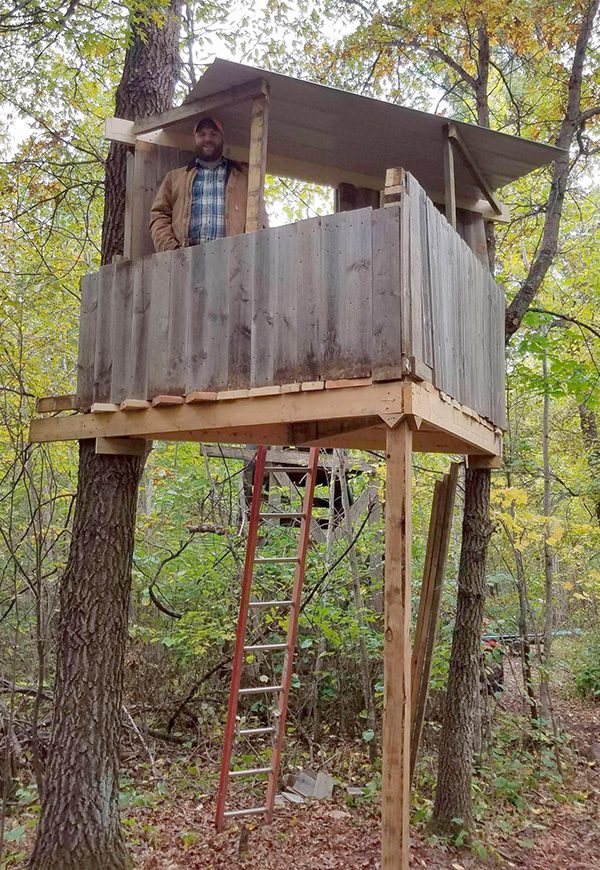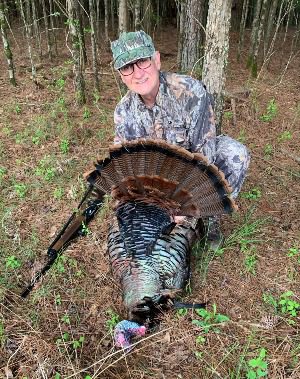There’s something about the deer we hunt. They’re sharper than we are and the blink of an eye or a slap at a mosquito may be all it takes to cause a deer to turn tail and run. As a result, it’s more to the hunter’s advantage to hunt from elevated positions as deer usually are looking for danger at eye level or lower. Sitting 16 feet up a tree gives the hunter an advantage and when it comes to waylaying a wily buck, we need all the advantages we can get.
When I started deer hunting years ago, there were no tree stands on the market. If you hunted from an elevated position, it meant gathering up a bunch of two-by-fours, hammer, nails and saw to construct something that would keep you above a deer’s line of vision.
Some of the first ones I constructed were not only weird looking contraptions, they were also unsafe. Switching your Red Man from one jaw to the other was often all that was needed to flip you out and send you to the ground.

Years later as climbing stands and ladder stands came on the market, these proved safer than the man-made contraptions. Because they were so heavily used, news began filtering in of accidents resulting in falling out of stands.
Dr. Bobby Dale, a life-long hunter, is also an emergency room physician who practices medicine in his hometown of Tupelo, Mississippi. Visiting with Dr. Dale at the annual conference of the Southeastern Outdoor Press Association in Johnson City, TN several years ago, we had occasion to talk about what is more likely to injure hunters while hunting.
Dale noted that contrary to what many believe, it’s not the older and more fragile hunter who is more apt to be injured; it’s the strong, virile, younger guy.
“From what I’ve observed from patients I have seen in the ER where I practice, it’s the younger one more prone to suffer serious injuries while hunting. This is particularly true concerning falls from elevated deer stands. In fact,” Dale said, “I recently read a report that revealed the majority of bow hunters who fall from tree stands are in their 20s and 30s. Also, about 10% of these injuries are alcohol-related.
“While it is true that guys in their 50s and 60s and older have bones that are more easily broken, I don’t see nearly as many injuries from falling from a stand from this older group. It’s just a fact that the older guy is more cautious,” he added.
Dr. Bobby Dale
‘Dale noted that contrary to what many believe, it’s not the older and more fragile hunter who is more apt to be injured; it’s the strong, virile, younger guy. ‘

Dr. Dale noted that a fall, even one from just a few feet, can result in serious injury. Obviously, the further you fall, the more serious injuries become, he said.
“I’ve seen victims who fell from stands come to the ER with everything from closed head injuries, bleeding on the brain, spinal fractures with paralysis, broken arms, legs and ribs, collapsed lungs, ruptured spleens in addition to profuse external bleeding,” Dale said.
While mishaps using home-made deer stands are more likely to result in serious injuries, manufactured stands can also cause falls if not used properly.
“Manufactured stands have to meet a safety code and the vast majority of these stands are safe when properly used. However, they still have to be secured to the tree in the proper manner to be completely safe. Climbing stands are quite safe but when care is not taken in using them, they can result in twisting or slipping when not correctly secured to the tree. The result can be disastrous,” he added.
With deer season rapidly approaching – archery season begins October 1 – make sure your tree stands are in top notch working order and that you practice all the safety rules having to do with elevated deer stands. It takes only one moment of lapse in judgement or one misstep to make looking for a big buck the least of your concerns.
 fgazette.com Community news site for Union Parish Louisiana
fgazette.com Community news site for Union Parish Louisiana